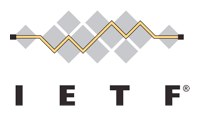 Day 4 of the 86th meeting of the Internet Engineering Task Force (IETF) hits all of our Deploy360 topics – IPv6, DNSSEC and Routing Resiliency/Security.
Day 4 of the 86th meeting of the Internet Engineering Task Force (IETF) hits all of our Deploy360 topics – IPv6, DNSSEC and Routing Resiliency/Security.
General information about participating remotely can be found on the Remote Participation page as well as the IETF86 agenda – specific info for the groups we are following is included below.
0900-1130 Thursday, March 14
Homenet – Caribbean 3
This working group focuses on the evolving networking technology within and among relatively small “residential home” networks.
Interface to the Routing System (I2RS) – Caribbean 5
This is a new working group meeting for the first time that is seeking to define a publicly documented interface into the Internet’s routing system for applications to use. The best way to understand this new group would be to read draft-atlas-i2rs-problem-statement.
1300-1500 Thursday, March 14
Port Control Protocol (PCP) – Caribbean 6
The PCP working group is back again looking at how to enable communication from applications across middleboxes such as Network Address Translation (NAT) devices and firewalls for both IPv4 and IPv6.
Two other groups also may be of interest during this time block:
1510-1710 Thursday, March 14
Dynamic Host Configuration (dhc) – Caribbean 1
The DHC working group looks at DHCP and aspects of dynamically configuring IP addresses, both for IPv4 and IPv6, although the focus these days is on DHCPv6.
Operational Security (opsec) – Caribbean 3
The OPSEC working group looks at the operational security concerns of IP networks. In this meeting there are 3 drafts focused on the security of IPv6 networks.
1730-1830 Thursday, March 14
Dynamic Host Configuration (dhc) – Caribbean 1
The DHC working group will continue to meet during this timeslot. Information is above.
DNS Operations (DNSOP) – Caribbean 4
The DNSOP Working Group focuses on operational aspects of the Domain Name System and at this session has multiple drafts relating to DNSSEC.
1900-2100 Bits-N-Bites
This reception / networking time in Grand Sierra D should be an interesting chance to look at new technology from a number of sponsors.
2000-? Alternative PKI Side Meeting, Boca 4
For those people interested in authentication and the public key infrastructure (PKI) aspects of the Web, there will be an “Alternative PKI Models Side Meeting” in room Boca 4, the IAB office, to talk about the requirements, goals and the design assumptions for a Web PKI. Given our interest in DNSSEC and DANE, I (Dan) will be in this meeting to participate.
And after all of that… we’ll be trying to figure out how to get some food. 
P.S. For a broader view of the Internet Society’s interest in IETF 86 beyond that of just the topics we cover here at Deploy360, please see our “Rough Guide to IETF 86′s Hot Topics“.
NEW! Listen to this post (and please follow Deploy360 on SoundCloud if you use that service):

 Google provides
Google provides 

 Congratulations to our friends up North in Canada for the
Congratulations to our friends up North in Canada for the 

